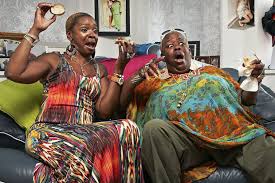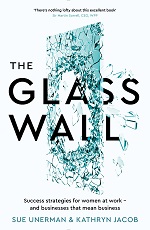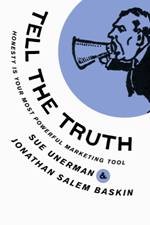“Friendly is the new cool”
Journalist Jess Cartner-Morley is talking about Fashion.
“Smiling is the new pouting, friendly the new cool and softly-softly the new sell.”
She calls Instagram the new heart of fashion, replacing the catwalks of London, Milan and New York. She comments that to shine on Instagram a fashion brand needs to be friendly, approachable and above all authentic.
This is not just true of fashion brands. It is not just true of the catwalk. What’s more if it is true on the catwalk just think how much more it applies in the supermarket, on Amazon and on the high street to all kinds of category of brands. If you’re not Westwood or McQueen you have an even greater need to express authenticity and approachability. Not just through brand essence and tone of voice, not just in advertising, but above all in media strategy.
(I’m not suggesting every advertiser has to be on Instagram – it is early days yet, but it must be on the consideration list).
Aloof and cool were extremely desirable once. Now friendly and approachable have replaced these criteria. How can you warm up your media?
It might mean a role for micro-local communications. One voice nationally may not work in the brand’s best interest. Consider regional voices for radio across the UK, featuring local employees in regional papers or referencing specific statistics, streets and boroughs in outdoor executions (as MediaCom did for the Met Police’s highly effective confidence campaign).
How’s your approachability? Whilst it is still true that there are far more people watching brand/consumer interaction than joining in, it is an important signal of how friendly and agile your brand is.
How’s your tone of voice? There’s a finished perfection to most brand communications that does not necessarily play to enhancing approachability. It isn’t numbers of tweets/posts that count it is their tone of voice and share-ability. A catalogue of product suggestions is a catalogue whether you print it and door drop it or whether you cut and paste it into a series of tweets and posts. I’ve just scanned one food related brand’s last dozen posts. Ten are recipes, two are offers. Consistency is a fine thing, but come on Brand X – mix it up a bit – I’d never get out of the kitchen if I listened to you, and a spot of funny wouldn’t go amiss.
How much can your brand support potential customers? Is the brand purely out to show glamour with top models or could it encourage the potential in all of us?
So have an element of the campaign that specifically flatters the buyer as opposed to just amplifying a celebrity’s endorsement. Any sport brand can buy top level athletes’ endorsements if it has deep pockets. The brilliance of Nike is that it also speaks to the athlete in you, me, everyone, invites us all to run.
To be friendly you must act as a friend would, not just hide behind the spin of idealized friendliness – that really isn’t cool anymore.
Welcome to the age of Friendly.
For more on authenticity in media strategies see Sue’s book “Tell the Truth, honesty is your most powerful marketing tool”, available on special offer on Amazon now.






Every office needs a devil’s advocate
Monday, October 26th, 2015― Ludwig Feuerbach, The Essence of Christianity
Sky One’s new comedy drama, “You, Me and the Apocalypse” gives a starring role to Rob Lowe as the Devil’s Advocate.
What a job, I mean the actual job. I hadn’t realised until watching the show that this was a real job at the Vatican in Rome. For nearly four hundred years, from 1587 until 1983 it was the role of this man to pick holes in the evidence for canonisation of saints, and to look for real proof of any miracles. Guess what happened when the role was reduced in influence by Pope John Paul 11? Nearly 400 more saints confirmed during his quarter of a century of popedom, than all of the other 20th century popes’ terms of office put together.
Look round your office. Where does your devil’s advocate sit? If you don’t have one, then start to worry. There will undoubtedly be too much belief in “advertising miracles” and too many people placed on pedestals on the way to media sainthood for the longterm health of the organisation.
The analytics teams can be a good place to find devil’s advocates. Experts trained in examining the empirical evidence of the success of the communications plan to allow the truth to emerge from neophilia and gut feel.
More than once I’ve turned to them to provide evidence to argue against prejudices that still abound. Is daytime TV worth it for anyone under 70? Is there any point in advertising in the summer? If we do a cut down of the ad will it lose all its brand effect? (Yes, Yes, No). They need their own devil’s advocates too though, don’t let them optimise you into a sub-optimal situation where nothing new gets through because it is unproven.
Most people I know would hesitate to act on the advice of an astrologer or a tarot card reader without taking a reality check. We don’t believe in the stars or the signs like we used to do. We do like to follow the Herd however, as Mark Earls puts it. There are times then when claims made on a media conference platform or by those talking loudly in media hangouts sway media people to ditch an unfashionable medium at the expense of one that may be unproven but is on trend.
Don’t believe the hype then without questioning it. That includes the hype about the people around you. Building a reputation is a crucial part of building a career in our industry. In some instances it can be at the expense of other arguably more crucial characteristics. Can you think of anyone you know who is a bit shaky in some areas of being a media practitioner, whilst having a superb reputation for networking? The kindest thing that you could do for them is to be their devil’s advocate and to have a quiet word. Even the starriest amongst us need truth told otherwise they run the risk of believing their own hype.
Posted in MediaComment | No Comments »